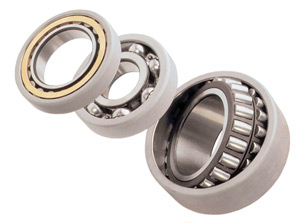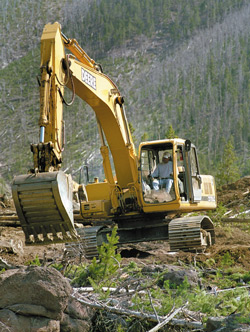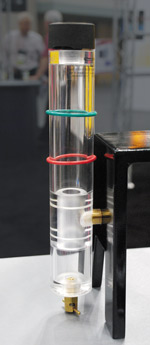A Better Approach for Greasing Bearings
The “Lube-Tips” section of Machinery Lubrication India magazine features innovative ideas submitted by our readers. Additional tips can be found in our Lube-Tips e-mail newsletter. If you have a tip to share, e-mail it to us at info@machinerylubricationindia.com.
 If you already use vibration-monitoring equipment with “spike energy,” gSE or other high-frequency detection technology, you can optimize the quantity of grease added to a bearing by running your monitoring equipment while adding grease. When the overall level of the signal drops suddenly and noticeably, grease has reached the bearing. Stop adding more. Using this approach saves those on limited budgets from having to buy additional specialized greasing equipment with monitoring ability.
If you already use vibration-monitoring equipment with “spike energy,” gSE or other high-frequency detection technology, you can optimize the quantity of grease added to a bearing by running your monitoring equipment while adding grease. When the overall level of the signal drops suddenly and noticeably, grease has reached the bearing. Stop adding more. Using this approach saves those on limited budgets from having to buy additional specialized greasing equipment with monitoring ability.
Advice for Overheating Hydraulics
If the hydraulic system is overheating on your mobile equipment, it may prove useful to scan the entire machine for the source. For example, a machine that was gradually building heat in the hydraulic system started at an operating temperature of 130 degrees F and rose to 160 degrees F. After the thermography scan was complete, it became clear what the problem was. The auxiliary pump to the main pump was failing. This resulted in the oil reservoir maintaining a temperature above 200 degrees F. The reason the operators saw only a temperature of 160 degrees F was due to a faulty gauge.
Use Caution with Heat Exchangers
 There are many reducers in an industrial environment that require heat exchangers. Along with the benefits of heat exchangers comes the possibility of water leaks. Determine if the heat exchanger is truly necessary by noting the temperature of the reducer when the heat exchanger is valved off. If the reducer temperature is below the oil’s highest temperature runability, it may be a good idea to valve off the water to deter a possible water leak. If the reducer can’t operate without the heat exchanger, then oil analysis should be performed more often. It is important to frequently conduct oil analysis on water-cooled equipment because a leak in the cooling system can be catastrophic to the equipment.
There are many reducers in an industrial environment that require heat exchangers. Along with the benefits of heat exchangers comes the possibility of water leaks. Determine if the heat exchanger is truly necessary by noting the temperature of the reducer when the heat exchanger is valved off. If the reducer temperature is below the oil’s highest temperature runability, it may be a good idea to valve off the water to deter a possible water leak. If the reducer can’t operate without the heat exchanger, then oil analysis should be performed more often. It is important to frequently conduct oil analysis on water-cooled equipment because a leak in the cooling system can be catastrophic to the equipment.
Modifying Sight Glass Improves Visibility
On equipment with vented oil tube sight glasses, it is sometimes hard to determine the oil level. This may be due to poor lighting or a dusty environment. On the next inspection of the equipment, try removing the tube and glass. Clean the inside of the tube with a degreaser, then color the inside with a white or bright color marker that is compatible with your oil. A felt-tip white metal marking stick works great because it allows you to get inside the tube channel. Equipment oil levels will be easier to detect with the lighter background.
A Variation on the Crackle Test
 Another method of performing the crackle test to detect the presence of water in oil involves using a small portable electric oven burner. Place 1 ounce of the contaminated oil sample in a glass bottle on the burner. The bottle should not be capped. As the water-contaminated oil sample is heated, the water will heat, bubble and then begin to evaporate. If the oil is contaminated only with water, the oil will look like new oil after all of the water is evaporated. This process takes about 5 minutes or less and easily confirms the presence of water. As with all heat-related tests, use protective equipment to protect your face, hands and body when performing this test.
Another method of performing the crackle test to detect the presence of water in oil involves using a small portable electric oven burner. Place 1 ounce of the contaminated oil sample in a glass bottle on the burner. The bottle should not be capped. As the water-contaminated oil sample is heated, the water will heat, bubble and then begin to evaporate. If the oil is contaminated only with water, the oil will look like new oil after all of the water is evaporated. This process takes about 5 minutes or less and easily confirms the presence of water. As with all heat-related tests, use protective equipment to protect your face, hands and body when performing this test.
How to Store Grease Correctly
Store tubes of grease vertically, not on their sides. This will minimize the amount of oil loss from bleeding, keeping the containers and storage area in better condition.
